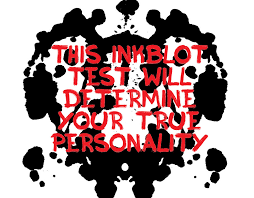Tag Archives: personality
Personality Tests: Objective & Projective Tests – Video & Lesson Transcript

Therefore, subjects can lie intentionally and fake personality traits they don’t really have. Therefore, subjects cannot easily fake personality traits on a projective test. In the Thematic Apperception Test, subjects are exposed to a series of cards that contain identifiable, provocative, and still ambiguous images. By putting essential information in an easy-to-use format, these cards help you keep track of the many details involved in Rorschach interpretation. To receive credit as the author, enter your information below. These materials put all the essential scoring and interpretive information at your fingertips. The Rorschach Inkblot Method (RIM) remains a commonly used projective device test in clinical assessment and personality research, despite ongoing controversy about the empirical support for the reliability and validity of its scoring systems. Scott Lilienfeld, an associate professor of psychology at Emory University and co-author of the 2003 book “What’s Wrong with the Rorschach?” is one of many psychologists who doubts the validity of the test.
A serious disadvantage of projective tests is that they have questionable reliability and validity. Projective tests are not infallible, but they can truly serve as a great way for therapists to learn about their patients, understand their personality traits, and determine some potential ways of helping them. Projective techniques, including TATs, are used in qualitative marketing research, for example to help identify potential associations betweenbrand images and the emotions they may provoke. Researchers who develop tests address this problem by including lie scales in tests, projective personality tests, which provide information about the likelihood that a subject is lying. Most commonly during any type tests or examination, the result will depend on the reaction and refection of the a human behavior. They haven’t been found to be reliable or valid in predicting behavior. However, beginning in the mid-1990s others began to attempt to replicate or update these norms, and found they could not. However, it’s important to remember that this test is designed to help you, regardless of whether it’s being administered by a therapist, a career counselor, or some other specialist.
The 16PF can also used be used by psychologists and other mental health professionals as a clinical instrument to help diagnose psychiatric disorders and help with prognosis and therapy planning. The blot can also be rotated. Psychologists are probably most familiar with Exner’s Rorschach Comprehensive System (RCS), formulated in 1974. According to this system, each response to every blot is scored according to response location, quality, determinants, contents, organization, and special scores. Projective tests are useful because they allow psychologists to assess unconscious aspects of personality. Despite this flaw, many researchers and clinicians find that such tests give them useful information. How the individual perceives and reacts to the image can be used to discover information regarding their personality, outlooks on life, and even subconscious views and biases. Use information from your researched peer-reviewed articles and required sources to support your work in each section. It makes heavy use of what factor (shading, color, outline, etc.) of the inkblot leads to each of the tested person’s comments.
The following has been adapted from the Wikipedia: Rorschach inkblot test website. What do the TAT and Rorschach Inkblot Test have in common? Focusing only on adolescents, covering both the TAT and the Rorschach, and utilizing object relations theory as its major interpretive foundation, the book offers practitioners an alternative to general references based on a more actuarial, nomothetic, and atheoretical interpretive approach. Its supporters declare that the TAT can touch a person’s unconscious part or logic that might reveal suppressed aspects of the person’s personality, motives and need for power, intimacy and achievement. Projective testing was part of the movement to promote development of philosophical ideas and scientific theories. Along with each theory of personality development comes a different theory on how to measure it. I am inclined to agree, and hope that the new diagnostic tools currently in development (blood tests and brain scans, to name just two) will prove to be more reliable measures with better standardization. Projective tests are also not transparent: subjects cannot figure out how their responses will be interpreted.







